In lightpainting photography is a sub genre known as camera rotation photography where the camera is rotated on it's lens axis during the exposure. It would be easy just to shoot and rotate static subjects in the dark and I'd be happy with them. However, I have an unexplainable urge to create something out of the ordinary, even for lightpainters. I also like the idea that other lightpainters have to scratch their heads trying to work out how a shot was created.
Plughole Dimension Jumper
In the Peak District of Derbyshire is a 30 metre wide plughole in a reservoir. When the water level gets high with rain, the plughole overflows and is visited by literally hundreds of photographers all shooting the same thing. And all of them add their images to Zuckerbook and they get hundreds of "likes". I prefer not to follow the herd and shoot my own thing and say damn the likes! I can't spend likes at my local camera shop!
This shot consists of two parts shot in one photographic exposure. First we rehearsed @fadetoblack jumping in the air holding on to a flashgun to make him appear to be flying. Then I rehearse shooting the giant plughole with a 180 degree camera rotation. Put them both together and Tim here looks like he may be failing to reach the next dimension!
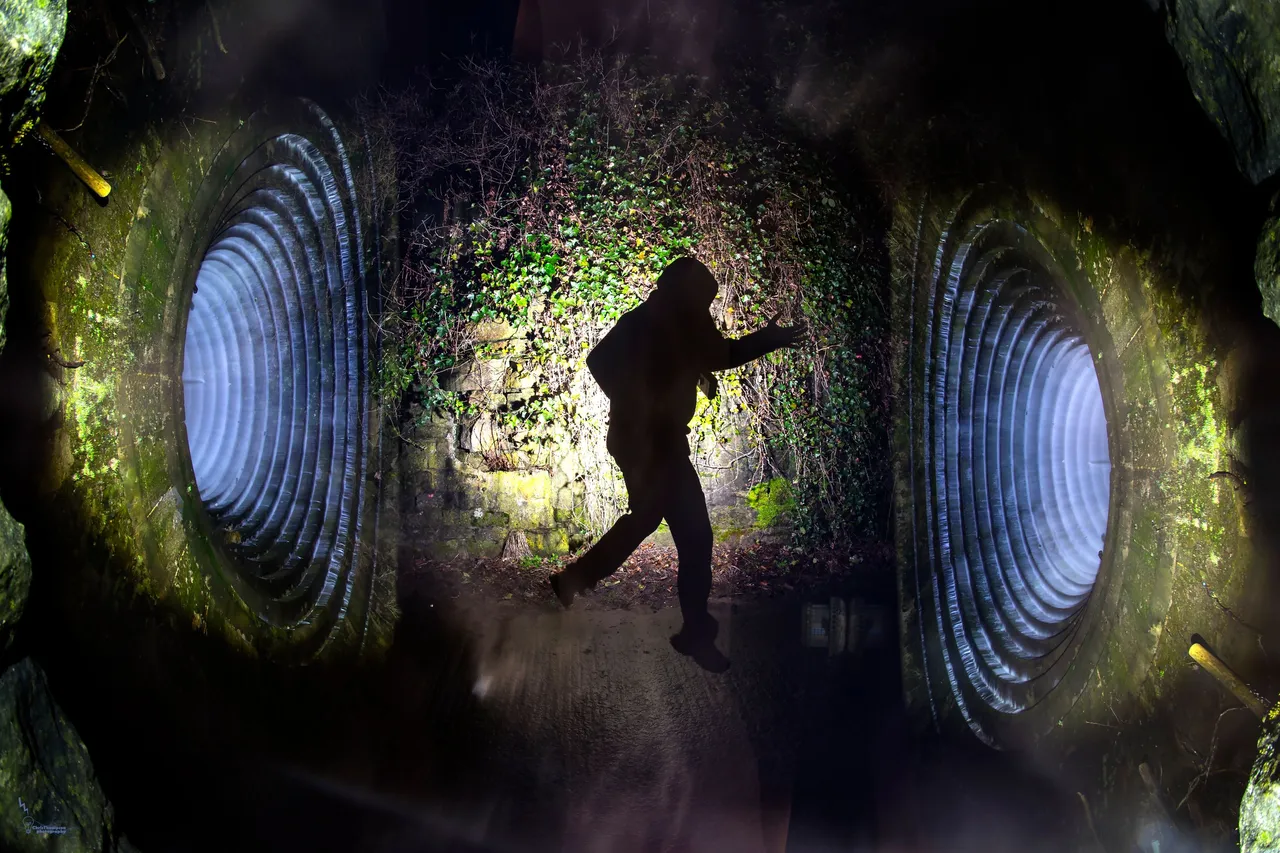
Convex Nights
The above shot gave me the idea for the next one. In this abandoned building is a high level gantry with stairs leading to the top. I had the idea where I could ask a volunteer (@neilru75) to stand on top of the gantry and spin burning steel wool knowing that the sparks would fall to the ground under gravity. If I were to rotate two sets of sparks, I would end up with a dark, unexposed space in the middle. It would look even more wild if the two spins of sparks were shot with a fisheye lens.
This shot consists of three parts; two spins then a lens and tripod swap during the exposure to add the central figure. This shot was created in one photographic exposure.
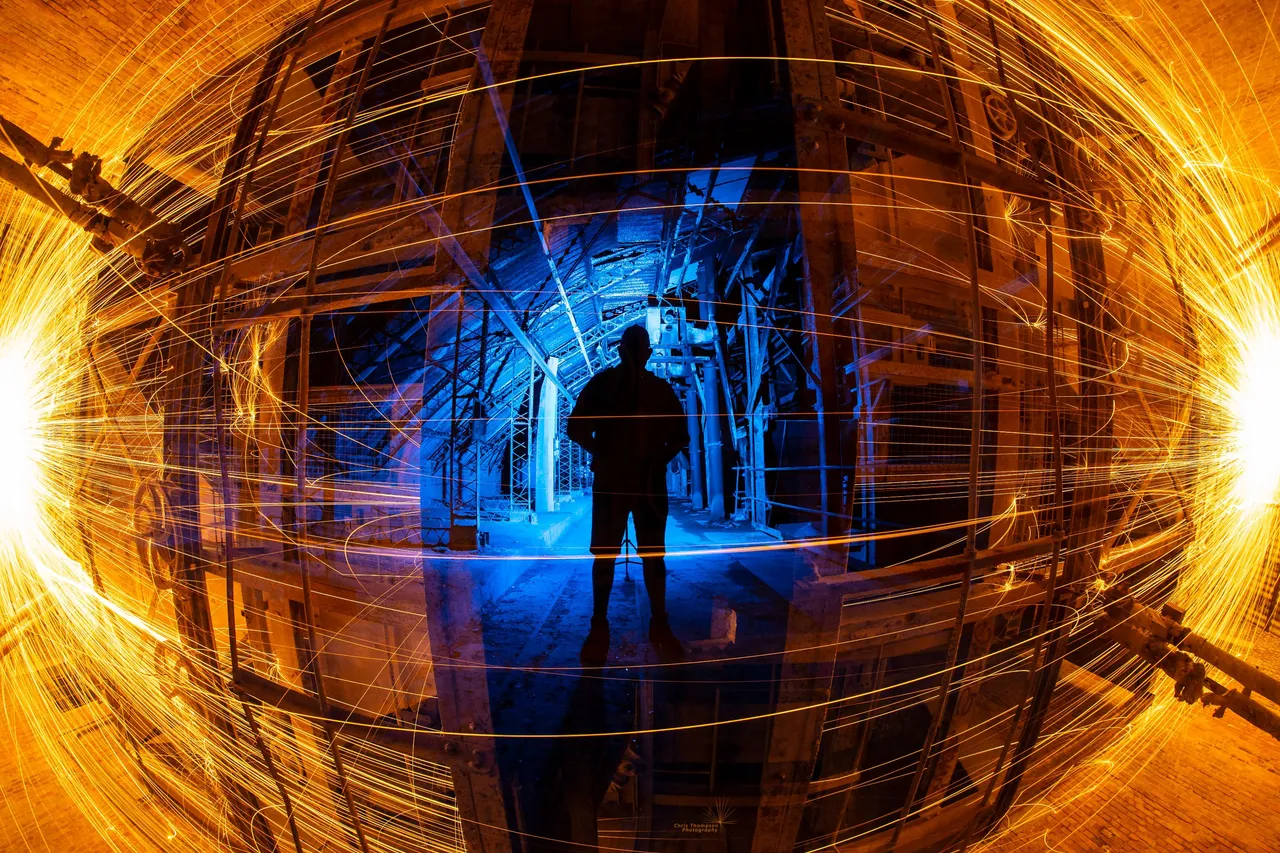
Where am eye?
This is another lens and tripod swap image where I've shot the image of the eye on an iPad then swapped lenses and tripods to point at a fibre optic brush. I shot the fibre optic brush out of focus and also freehand rotated the camera for a swirly effect. Again, all shot in one exposure.
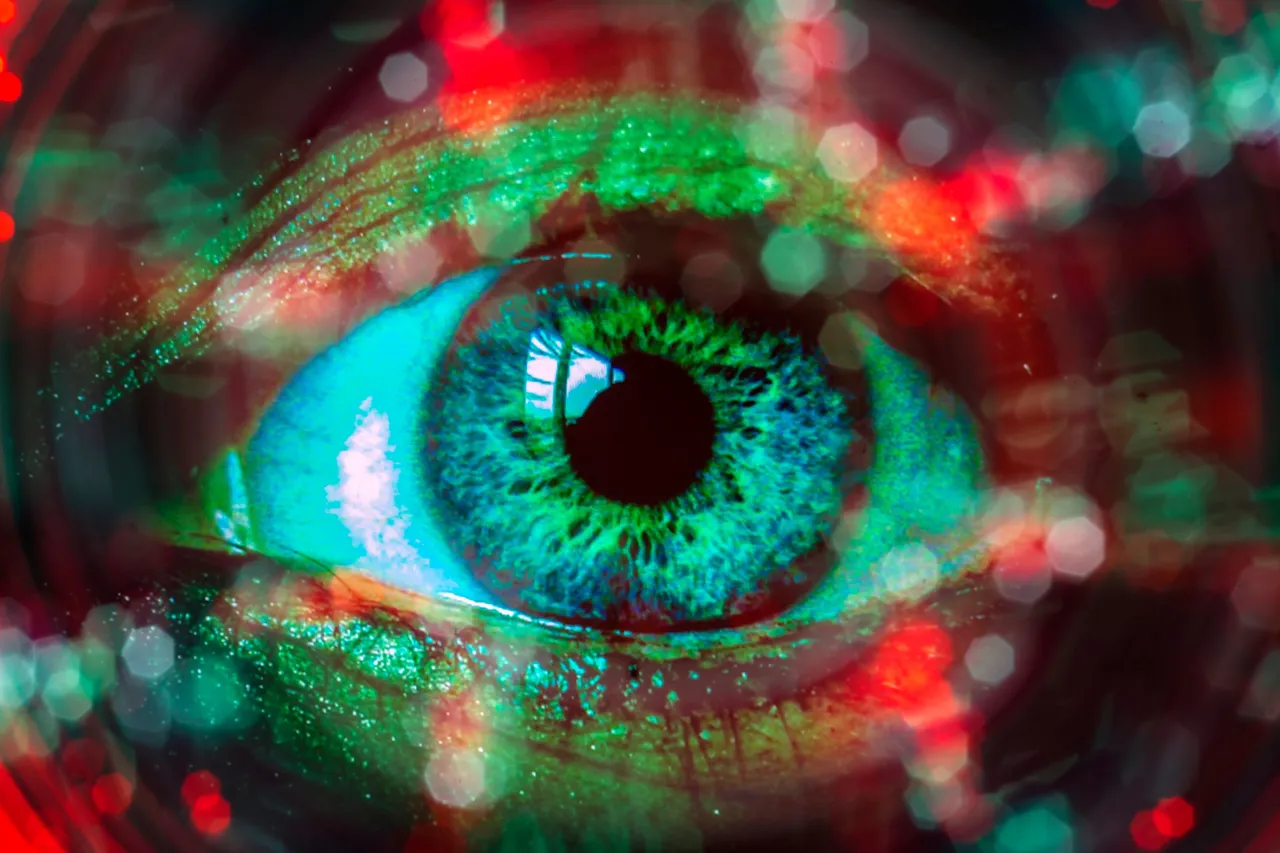
Bokeh Laundering
Another image using a white fibre optic brush. Here I've shot the bokehfied fibre optics starting with the camera not moving then then after a second or two I have freehand rotated the camera for the swirly effect. The unusual looking bokeh is the result of using a vintage Russian Helios 44M 55mm lens with the front element reversed! Note to self: do this again!
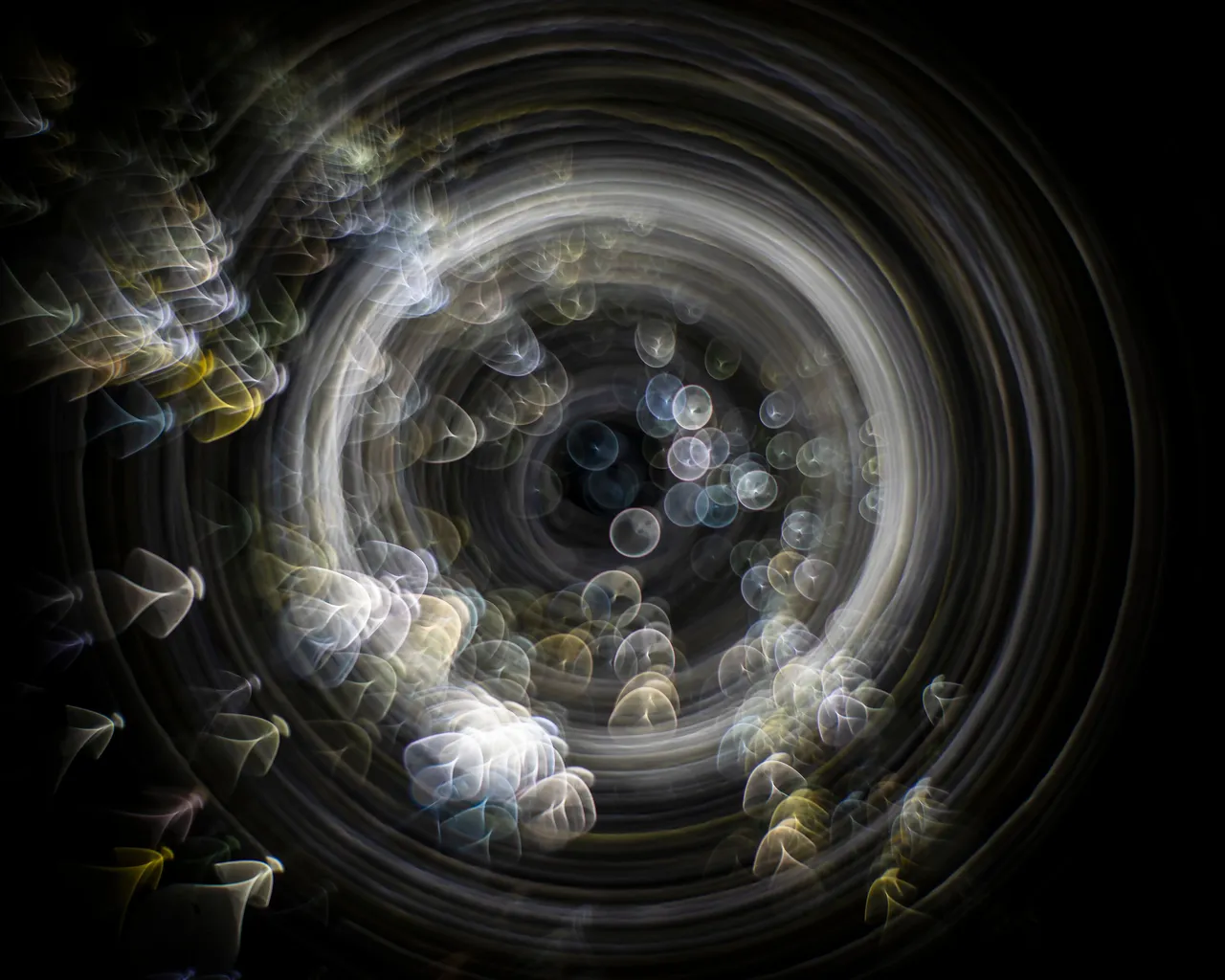
Organised Kinetic Chaos
This is the result of freehand spinning the camera while another lightpainter spins lights at the same time. The results can be somewhat unpredictable but that's half the fun!
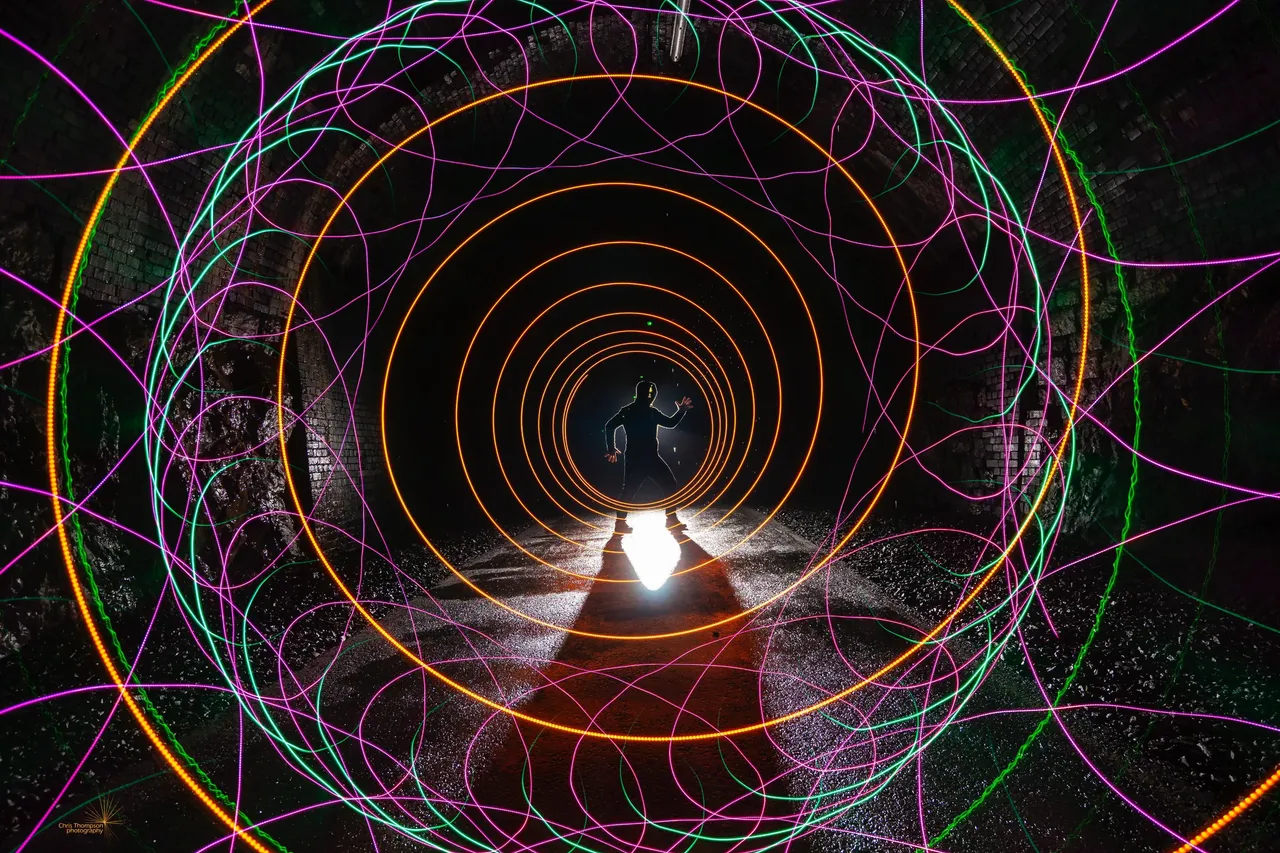
Multi-dimensional Cave Lightpainter
This is another lens and tripod swap shot. For the first part I shot the larger silhouette as is, making sure to leave plenty of dark, unexposed space within which to add more light. I then swapped lenses to a wider angle lens to make the same silhouette smaller in the frame. I have then rotated the smaller figure only three times so as not to overpopulate the image.
Totally unique, I haven't seen anyone trying to copy this one which is rather satisfying!
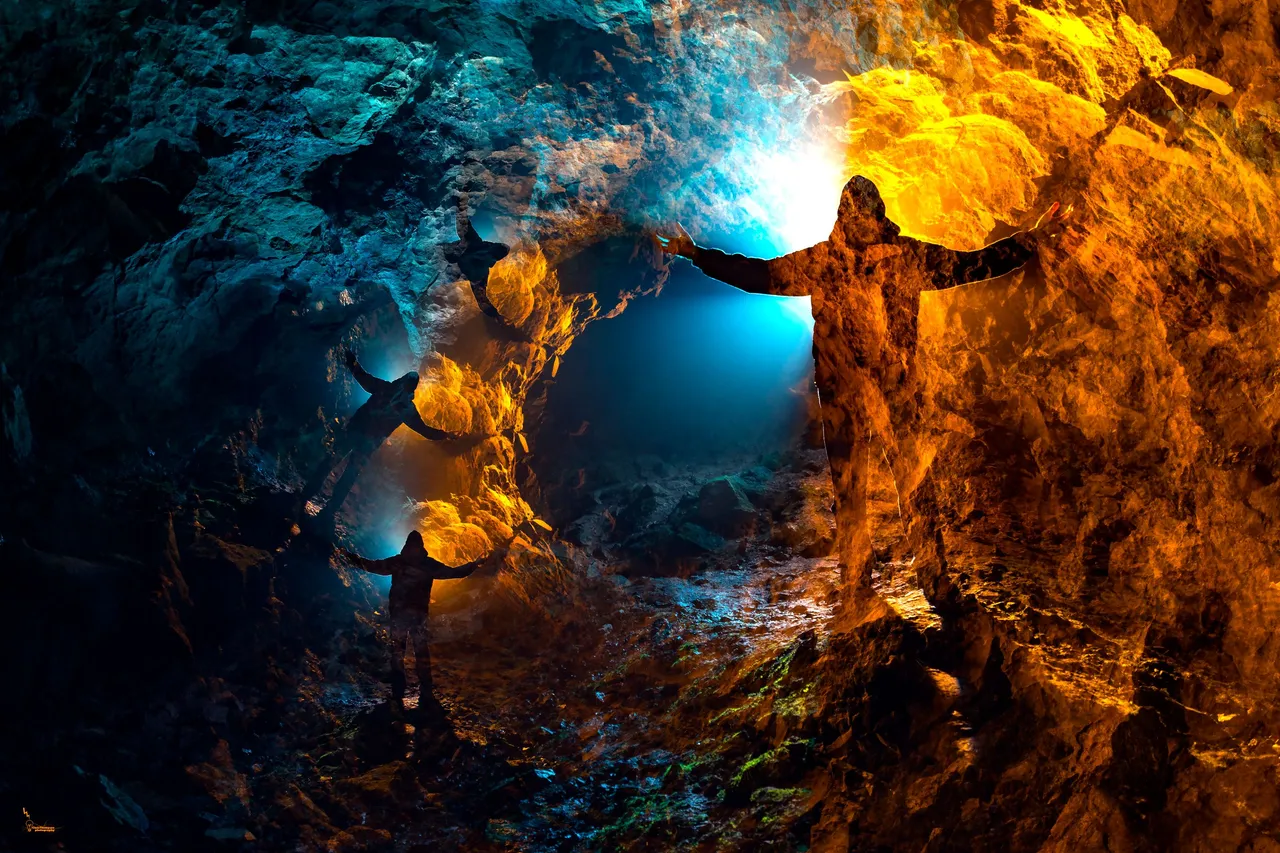
About me:
I usually specialise in shooting lightpainting images but occasionally dabble in urbex and artistic model photography. I'm always on the lookout for someone to collaborate with; please don't hesitate to get in touch if you'd like to create art.
Social Media
https://www.facebook.com/fastchrisuk
https://www.flickr.com/photos/fastchris/
If you want to see more examples of lightpainting, feel free to check out these guys: @fadetoblack, @stepko, @gunnarheilmann, @mafufuma, @lichtkunstfoto, @yo-hoho, @oddballgraphics,@lacelight, @martbarras & @rod.evans.visual
Follow the Hive Community Lightpainters United to be introduced into the world of light painting.
